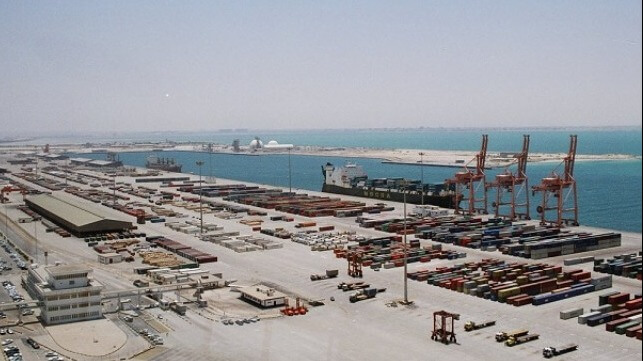Saudi Arabia’s Trade Prospects Attract More Carriers

Almost two years after Saudi Arabia launched the National Transport and Logistics Strategy, there is a notable improvement in the country’s ports performance. The strategy was meant to diversify Saudi Arabia’s economy into a logistics hub, leveraging its geographical position between three continents.
Going by recent updates, the strategy appears to be on course. Buoyed by trade growth forecasts expected to surpass $354 billion by 2030, carriers are investing in Saudi Arabia and assigned new tonnage to the trade routes with the country.
Hapag-Lloyd is leading the industry, adding two extra services linking Saudi ports to global trade routes. This week, the Saudi Ports Authority (Mawani) announced that Hapag-Lloyd has added the Jubail Commercial Port to an India Gulf Service shipping route, linking the port to six other global ports. These include Jebel Ali (Dubai), Karachi (Pakistan), Mundra (India), Sohar (Oman), Shuaiba (Kuwait) and Umm Qasr (Iraq). Three containerships with an average carrying capacity of 2,400 TEUs will provide the weekly service, which starts on February 12.
Earlier this month, MSC also added Jubail port to its India- East Med service. The weekly service allows the port to connect with Turkey, the Indian Subcontinent, Africa, and the Middle East. It will be served by five vessels with an average carrying capacity of 8,000 TEUs.
Jubail Port is emerging as a strategic trade gateway for the Kingdom’s Eastern region, hosting industrial and petrochemical complexes.
In addition, Jeddah Islamic Port has also been added to an Indamex shipping service, a route jointly operated by Hapag-Lloyd and CMA CGM. The service helped the Kingdom’s busiest port to gain access to leading trade gateways across the Indian subcontinent and North America. Some of the ports on the route include Port Qasim in Pakistan, Mundra and Jawaharlal Nehru in India, and Norfolk, Charleston, and Savannah in the U.S. The first sailing of the service left Jeddah Port on January 11 onboard MV Swansea, a 80,500 dwt vessel that has a carrying capacity of 6,966 TEUs.
Cumulatively, Mawani estimates that the Kingdom’s hubs have added up to nine shipping services over the last year. These services have helped to significantly boosting Saudi Arabia’s ranking in the global logistics indices.
UNCTAD’s Liner Shipping Connectivity Index for Q4 2022 noted a remarkable rise in connectivity for Saudi Arabia. The kingdom scored 71.33 points in Q4 2022, up from 69.45 points in Q4 2021 and 64.61 in Q4 2019. The index is based on a maximum of 100 points.
Saudi Arabia’s tremendous progress is attributed in part to multiple projects underway aimed at modernizing and expanding the country’s existing ports and terminals.
Recently, Mawani said that in December, Saudi ports experienced a 13.63 percent year-on-year growth in container throughput reaching 955,731 TEUs compared to 841,055 TEUs a year earlier. At the same time, the Ras Al-Khair Port posted its highest monthly throughput ever by handling more than one million tons of cargo. The Arabian Gulf port reported receiving a total of 43 ships loaded with mineral bulk cargo including ammonia, soda, and sulfuric acid. The port also achieved and annual record with nearly 8.7 million tons, up 24 percent as the industrial port becomes a leading maritime gateway for mining imports and exports in the region.
Mawani credits the growth to the execution of the National Transport and Logistics Strategy in building a world-class trade infrastructure in the Kingdom.
